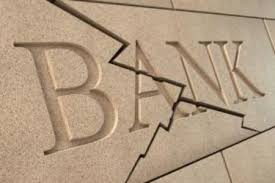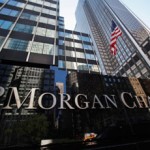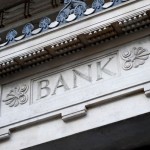The New Paradigm for Banks

Why are U.S. banks having a harder time making money? It’s a question that extends well beyond business models, operating environments and market valuations to the role they play in the economy, during good times and bad.
Financial institutions have offered an abundance of reasons for revising down their expectations for trading revenues and overall earnings this year. They include a weak economy, central bank policies and regulation. The banks’ responses have ranged from restructurings and layoffs to expressing their determination to ride out what they see as a temporary rough patch.
The economic part of the slowdown is the most likely to be temporary and, more important, largely reversible. The U.S. economy’s poor performance earlier this year, further confirmed by yesterday’s downward revision in first-quarter growth to a negative 1 percent, was at least partly weather-induced. Also, market volatility has been unusually low and central bank policy has been highly predictable. This means a lot less trading by investors, which reduces banks’ opportunities to intermediate, blunts their information edge and erodes their pricing power. The fall in revenues would have been much more severe had corporate merger-and-acquisition activities not picked up.
Other factors, though, are also in play. Most important, the enhanced regulation and supervision brought on by the financial crisis have prompted banks to exit certain activities completely and alter their balance sheets in at least two lasting ways: by increasing capital and by shedding riskier (and higher-returning) assets. Moreover, in what is reminiscent of their “macho provisioning” of the 1980s (triggered by the Latin American debt crisis), banks have sought to please shareholders and supervisors by meeting new regulatory targets well ahead of deadline.
This new paradigm, aimed at lowering the probability of big disasters, is not going away anytime soon, nor should it. Having almost been pushed off the edge into a prolonged global depression, society is understandably happy to make trade-offs to secure greater prospective financial stability in the banking system, even if they come at a cost in terms of efficiency (at the margin, the new paradigm may detract some potential growth, but it is unlikely to be a material amount).
More consequential is the buffer role that banks are supposed to play during spikes in market volatility. As was vividly demonstrated in the sharp price movements a year ago, when the Federal Reserve first signaled its intentions to pull back on quantitative easing, banks now have little appetite to warehouse risk by buying when lots of investors want to sell, and vice versa. As a result, sharp changes in market sentiment lead to bigger price movements than they otherwise would, and the risk of market dysfunction rises.
The big hope is that the revamp of regulation and supervision — and the more prudent bank behavior that this is meant to encourage — will prove effective in reducing the frequency of market dislocations. I suspect that this will indeed be the outcome, but the dislocations will be attention-grabbing when they occur. In the meantime, it seems that several banks will have no choice but to rework their business models to adapt to their new operating environment.
Author: Mohamed El-Erian is the chief economic adviser at Allianz SE. He’s chairman of Barack Obama’s Global Development Council, the author of best-seller “When Markets Collide,” and the former chief executive officer and co-chief investment officer of Pimco.
Source: bloomberg



























